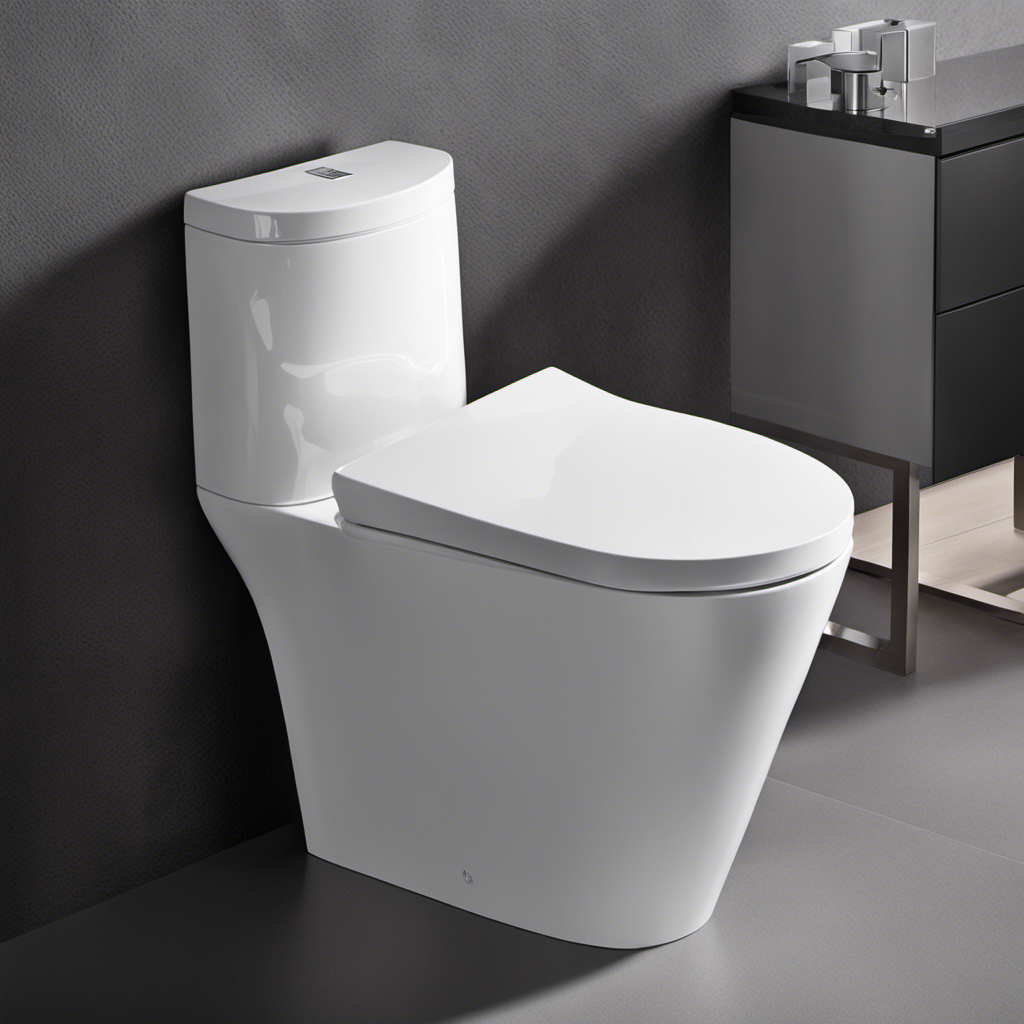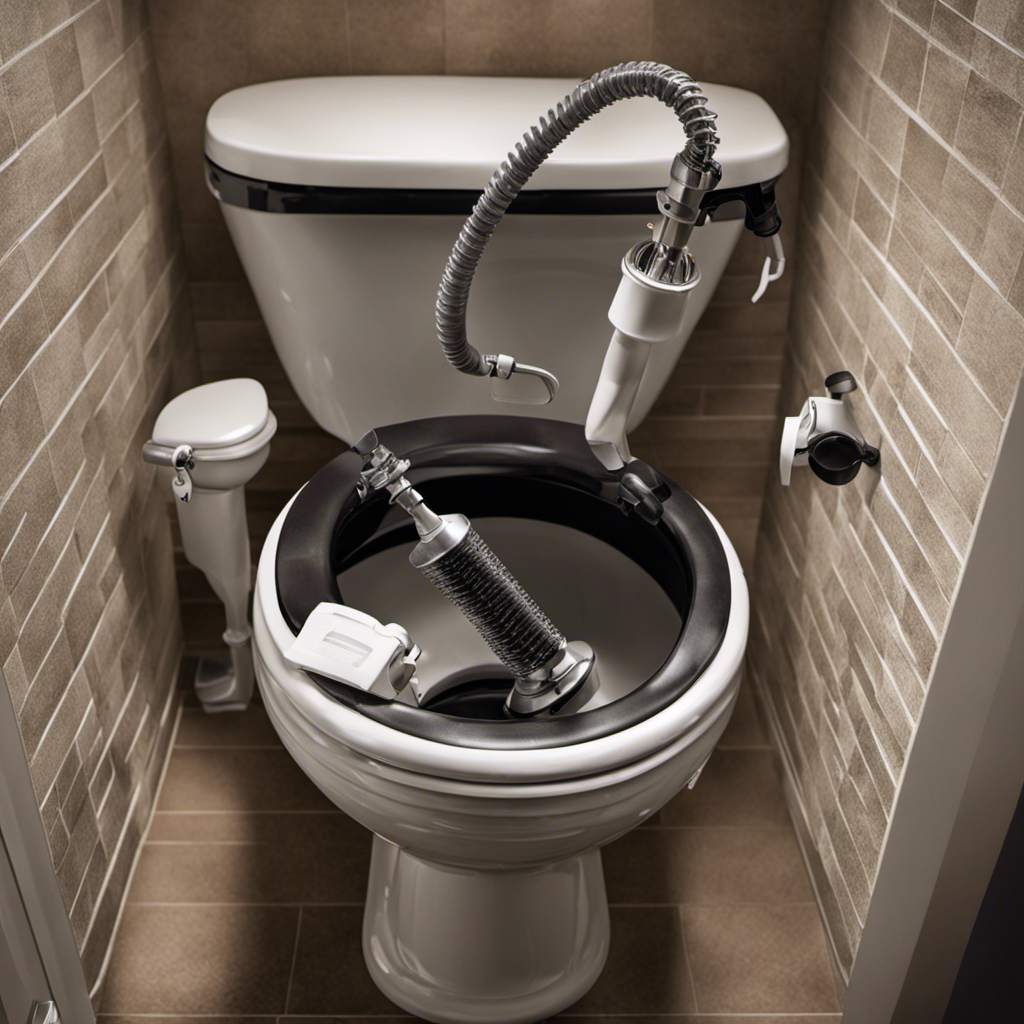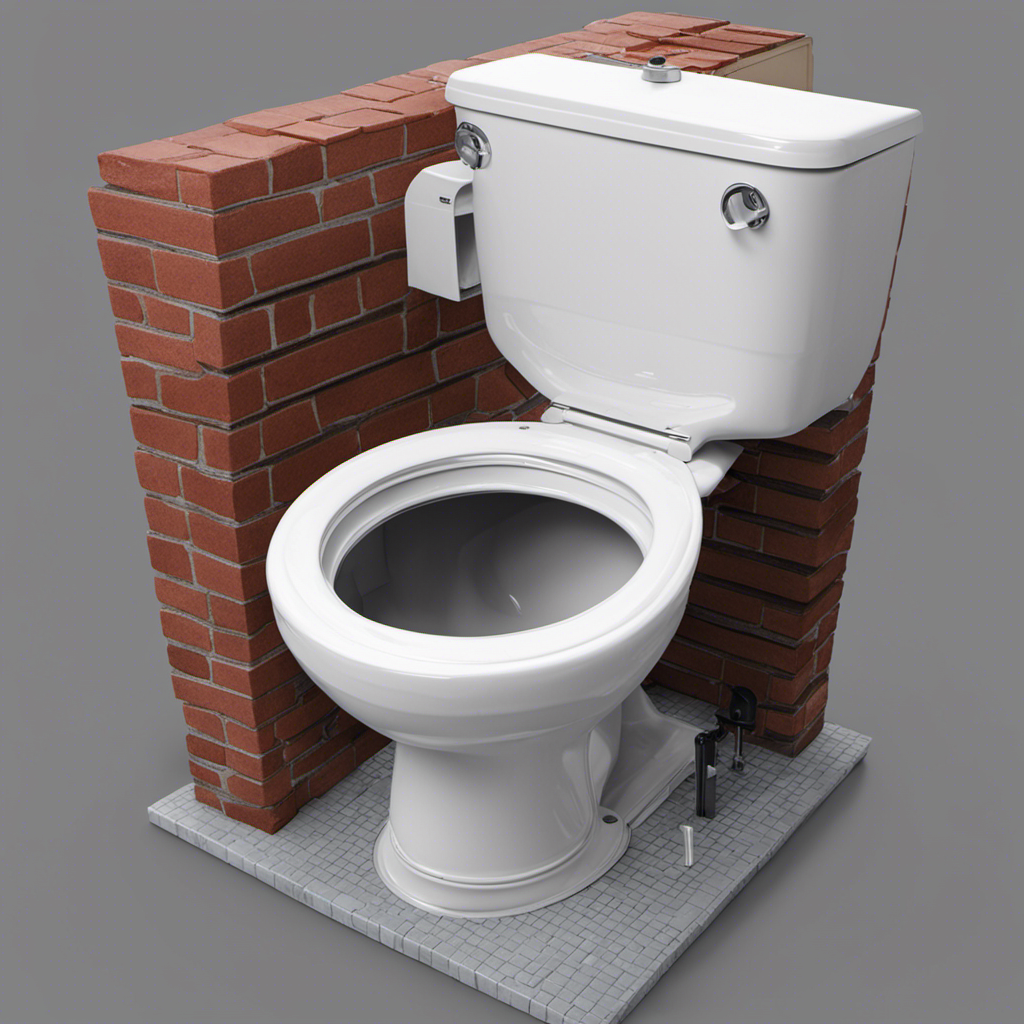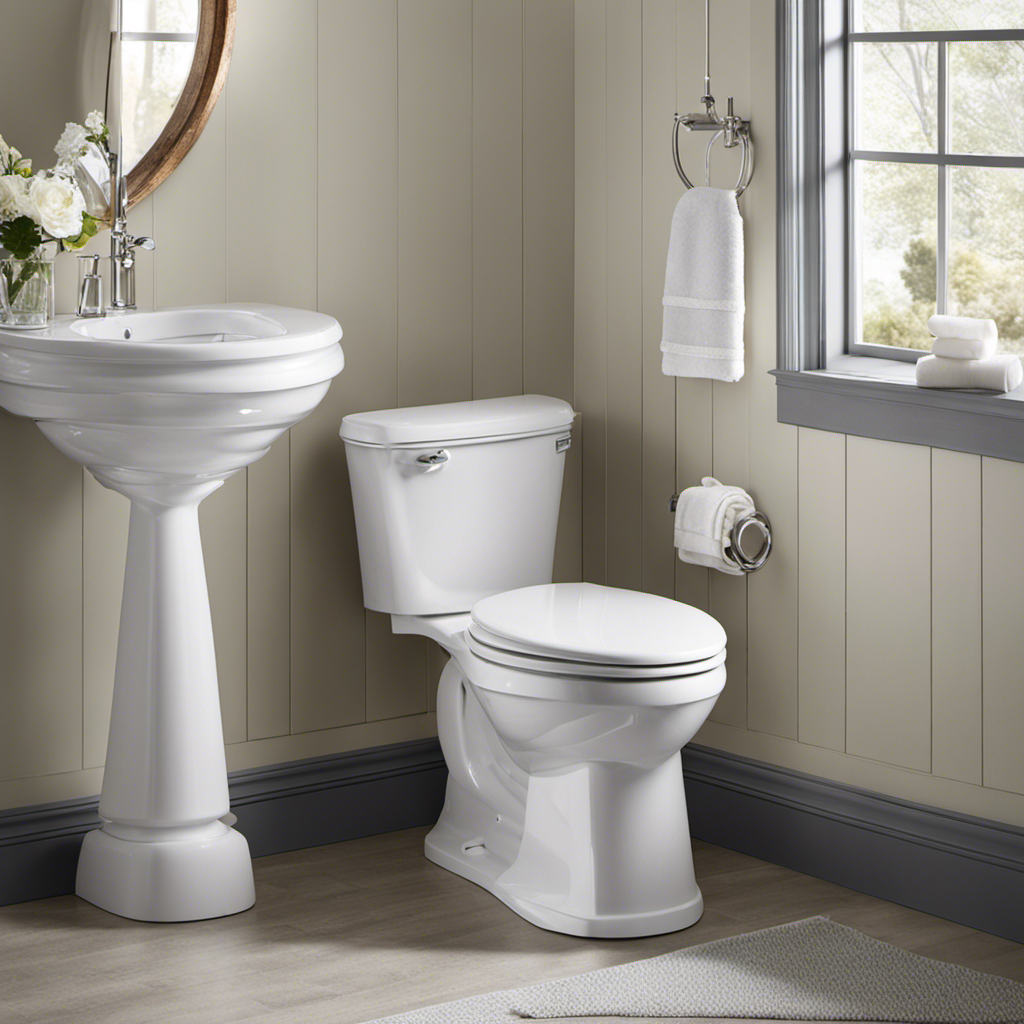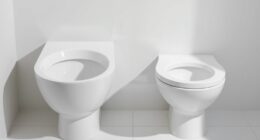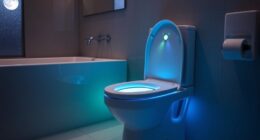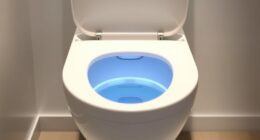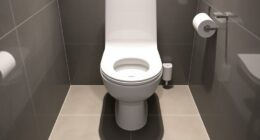In the world of toilets, the battle between siphonic and washdown models rages on. Like the clash of titans, these two contenders vie for the title of the best option.
Siphonic toilets, with their S-shaped trapways and powerful flushes, aim to conquer clogs and banish odors. However, they come with the burden of frequent maintenance.
On the other hand, washdown toilets rely on the force of gravity for their flushing prowess, providing a clog-resistant experience.
With this clash of strengths in mind, it’s time to delve deeper into the differences between siphonic and washdown toilets.
Key Takeaways
- Siphonic toilets have a powerful flush and a fully glazed, S-shaped trapway, while washdown toilets have a wider but shorter trapway and are less prone to clogging.
- Siphonic toilets may require more maintenance and can be louder, while washdown toilets require less maintenance and have a shallow bowl base.
- Factors to consider when choosing between siphonic and washdown toilets include installation requirements, water efficiency, maintenance needs, design differences, and homeowner’s preferences.
- To make the right choice, consider the powerful flush and fully glazed trapway of siphonic toilets, as well as the less prone to clogging and wider but shorter trapway of washdown toilets. Also, consider factors such as maintenance needs, toilet design, and water efficiency.
Pros and Cons of Siphonic Toilets
Siphonic toilets, while offering a powerful flush and minimizing waste residue, can be more prone to clogging due to their narrow trapway. These toilets have a longer bowl base and a higher water level, which helps to prevent odor. However, their narrow trapway can lead to more frequent clogs. Siphonic toilets require regular maintenance to ensure proper functioning.
On the other hand, washdown toilets rely on water pressure to wash away waste and have a shorter, wider trapway, making them less prone to clogging. They also have a shallow bowl base and a narrower water surface. In terms of maintenance, washdown toilets generally require less attention.
Overall, understanding the maintenance needs and the impact of water pressure is crucial when choosing between siphonic and washdown toilets.
Advantages and Disadvantages of Washdown Toilets
The advantages of washdown toilets include a shorter trapway and reliance on gravitational flow for flushing. This design allows for a more efficient and powerful flush, reducing the risk of clogging.
When selecting a toilet, there are several factors to consider. The maintenance requirements for washdown toilets are relatively low, making them a convenient choice for homeowners. Additionally, the shorter trapway in washdown toilets minimizes the risk of waste residue.
However, it is important to note that washdown toilets may have a shallower bowl base and narrower water surface compared to siphonic toilets. Despite this, washdown toilets are still a popular choice due to their effective flushing system and lower maintenance needs.
Performance Comparison: Siphonic Vs Washdown Toilets
When considering performance, homeowners should take into account factors such as efficiency, maintenance needs, and design differences between two popular toilet types. Siphonic toilets utilize a powerful flush to remove heavy waste, thanks to their fully glazed, S-shaped trapway. This design minimizes clogs and ensures water pressure effectiveness. However, siphonic toilets may require more maintenance due to their narrow trapway and can be louder than other toilets. On the other hand, washdown toilets rely on gravitational flow for flushing, resulting in less clogging. They have a wider but shorter trapway and require less maintenance. Ultimately, the choice between siphonic and washdown toilets will depend on the homeowner’s preferences and maintenance requirements.
| Siphonic Toilets | Washdown Toilets |
|---|---|
| – Powerful flush | – Less prone to clogs |
| – Fully glazed, S-shaped trapway | – Wider but shorter trapway |
| – Potential for more maintenance | – Requires less maintenance |
| – May be louder | – Shallow bowl base |
| – Long toilet bowl base |
Factors to Consider When Choosing Between Siphonic and Washdown Toilets
Homeowners should consider various factors when deciding between siphonic and washdown toilets. These factors include efficiency, maintenance needs, and design differences.
One important factor to consider is the installation requirements. Siphonic toilets typically require larger bathrooms due to their longer trapways and wider bowl bases. On the other hand, washdown toilets have shorter trapways and can be installed in smaller spaces.
Another factor to consider is water efficiency. Both types of toilets can be water-efficient, but washdown toilets rely on gravitational flow for flushing, which can use less water compared to siphonic toilets that require a powerful flush.
Making the Right Choice: Selecting the Best Toilet Option
Considering factors such as efficiency, maintenance needs, and design differences, individuals can make an informed decision when selecting between siphonic and washdown toilets. Siphonic toilets have a powerful flush that removes heavy waste and a fully glazed trapway that reduces clogs. They also have a longer toilet bowl base and a higher water level, which helps prevent odors. However, siphonic toilets may require more maintenance and can be louder. On the other hand, washdown toilets rely on gravitational flow for flushing and have a shorter trapway, which makes them less prone to clogging. They also have a wider but shorter trapway and require less maintenance. When it comes to toilet design and water efficiency, these factors are important to consider in order to make the right choice.
| Siphonic Toilets | Washdown Toilets |
|---|---|
| Powerful flush | Less prone to |
| Fully glazed | clogging |
| Longer bowl base | Wide but short |
| High water level | trapway |
Frequently Asked Questions
How Do Siphonic Toilets Compare to Washdown Toilets in Terms of Water Efficiency?
Siphonic toilets, compared to washdown toilets, may have lower water efficiency due to their powerful flush and higher water level. Washdown toilets, with their gravitational flow and narrower trapway, may be more water-efficient.
Are There Any Specific Plumbing Requirements for Installing Siphonic Toilets?
Yes, there are specific plumbing requirements for installing siphonic toilets. Proper venting and a water supply line are necessary. Installation tips include ensuring a level floor and tight connections to prevent leaks.
Can Washdown Toilets Be Installed in Smaller Bathrooms With Limited Space?
Yes, washdown toilets can be installed in smaller bathrooms with limited space. They have a shorter trapway and rely on gravitational flow for flushing. However, siphonic toilets have benefits like wider water surface and longer bowl base.
Are There Any Specific Maintenance Tips for Keeping Siphonic Toilets in Optimal Condition?
To keep siphonic toilets in optimal condition, regular maintenance is key. Some maintenance tips include checking for leaks, cleaning the trapway, and ensuring proper water levels. Troubleshooting may involve unclogging the narrow trapway.
Which Type of Toilet Is Generally Quieter During Flushing, Siphonic or Washdown?
Siphonic toilets tend to be louder during flushing compared to washdown toilets. When considering the quietness during flushing, it is important to compare the different types of toilets available.
Conclusion
In conclusion, when it comes to choosing between siphonic and washdown toilets, it is important to consider the pros and cons of each option.
Siphonic toilets offer a powerful flush and a wider water surface, but they require more maintenance and are prone to clogging.
On the other hand, washdown toilets have a shorter trapway and require less maintenance, but they have a narrower water surface.
So, which option is the best for you? Consider your specific needs and preferences to make an informed decision.
Are you looking for a powerful flush or ease of maintenance? The choice is yours to make.
